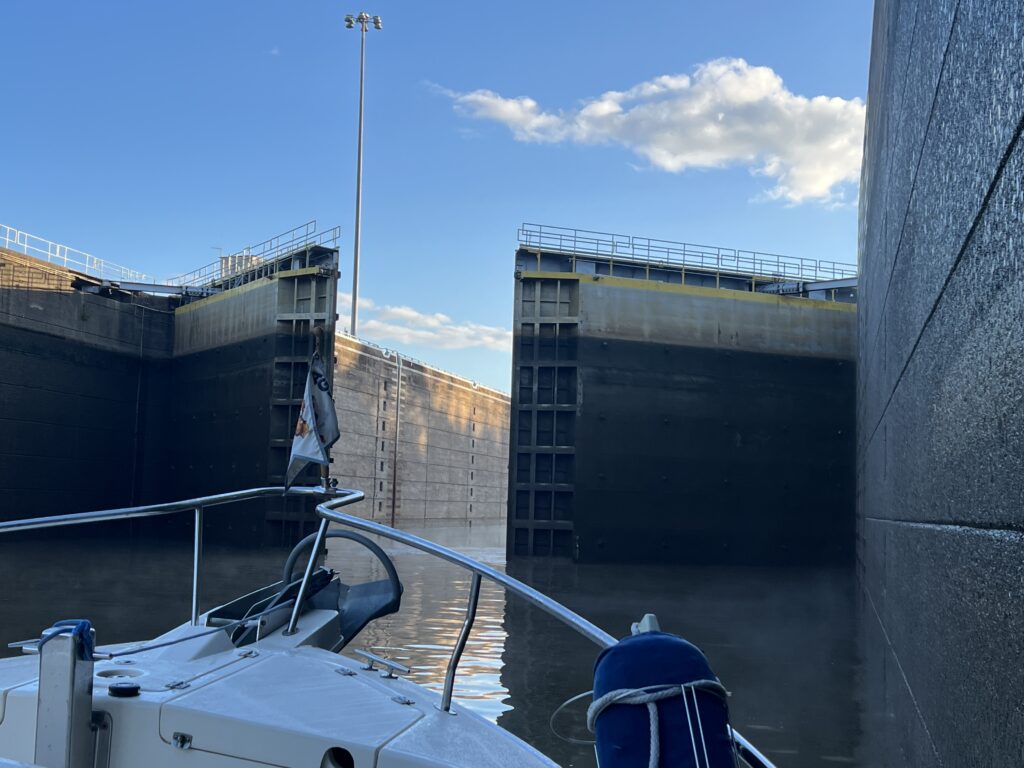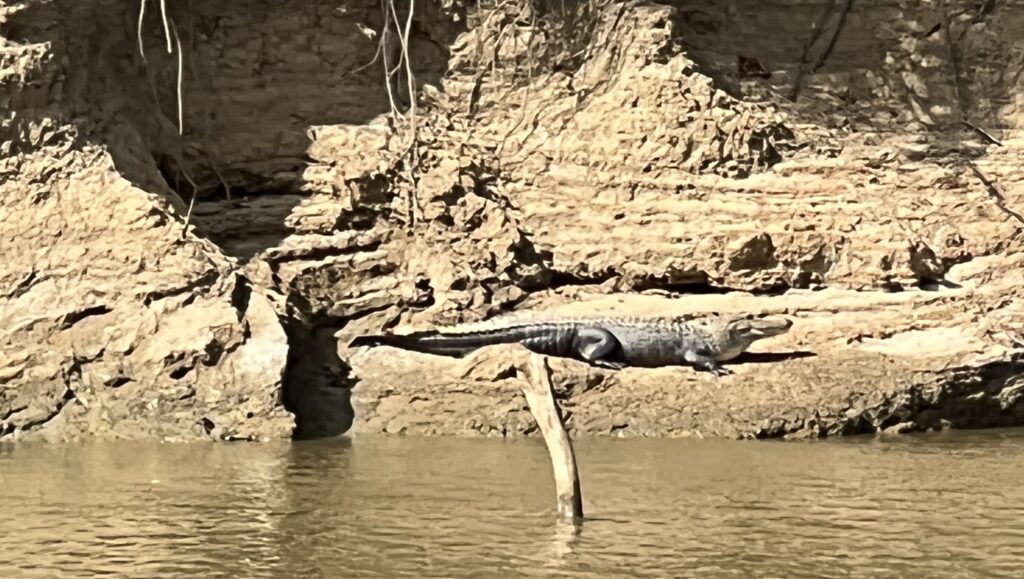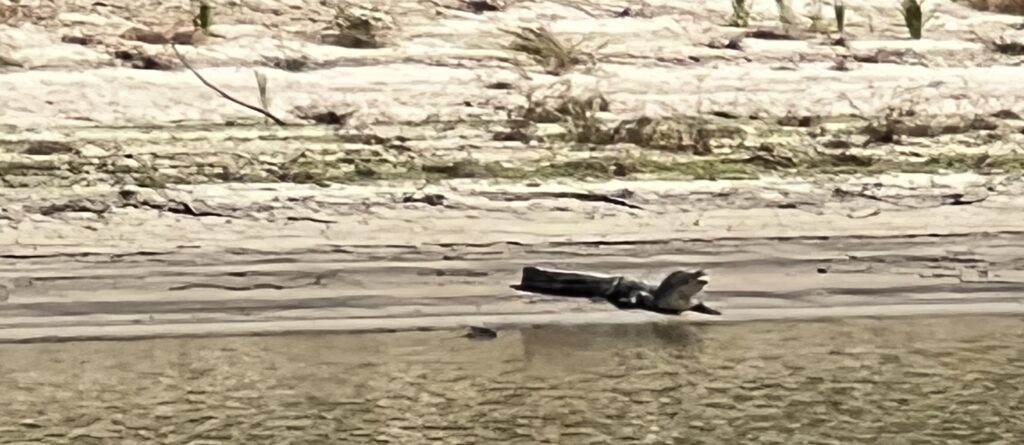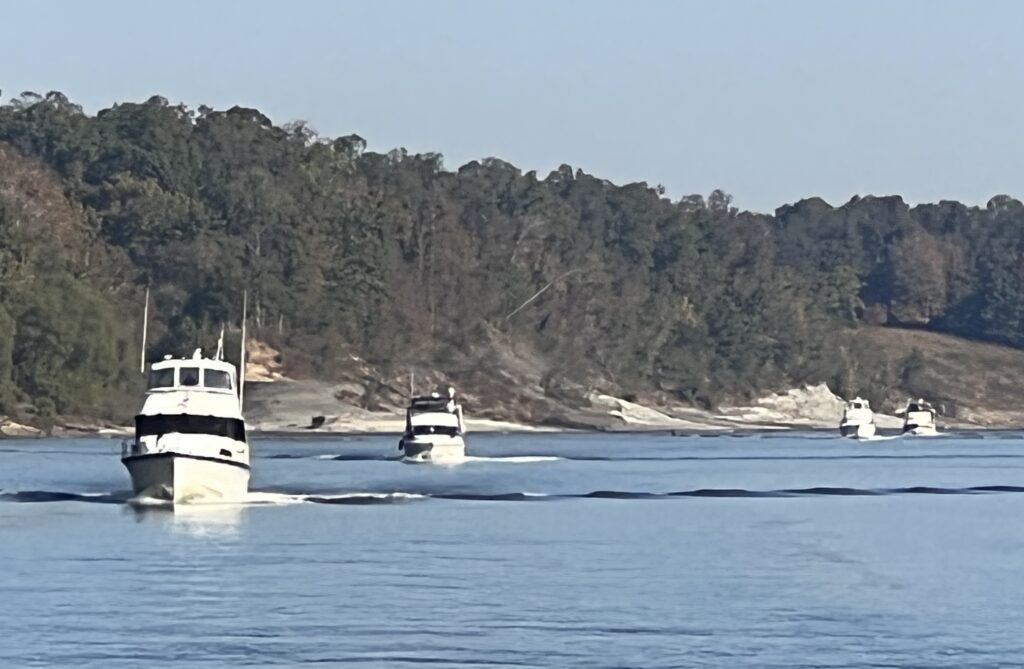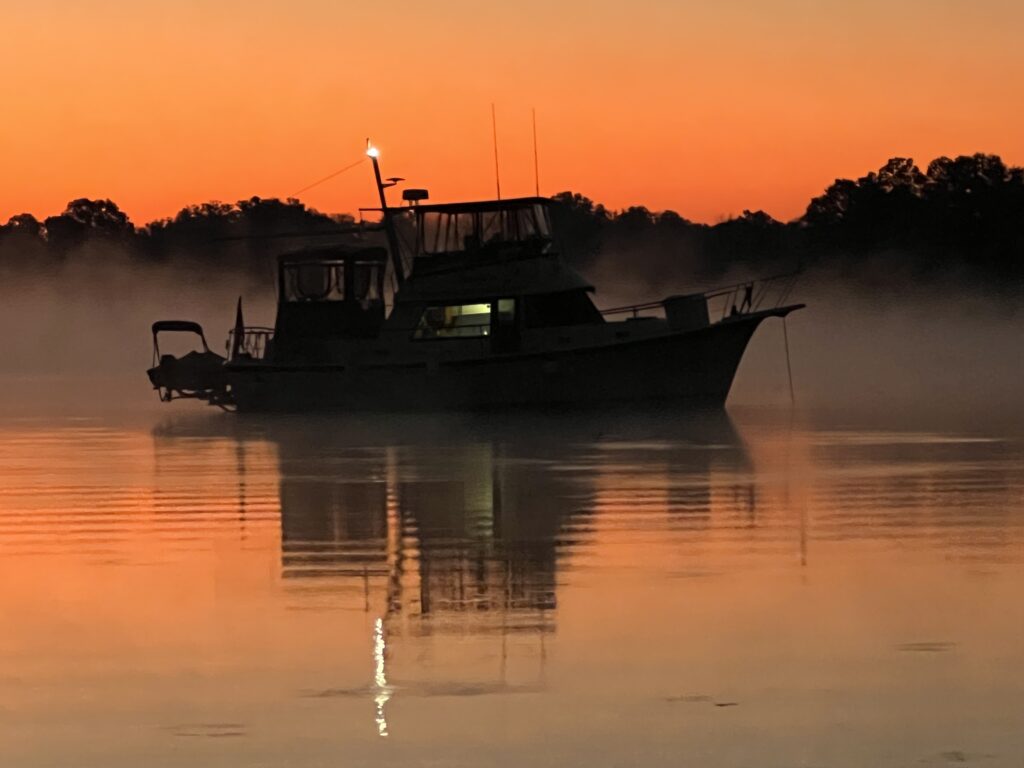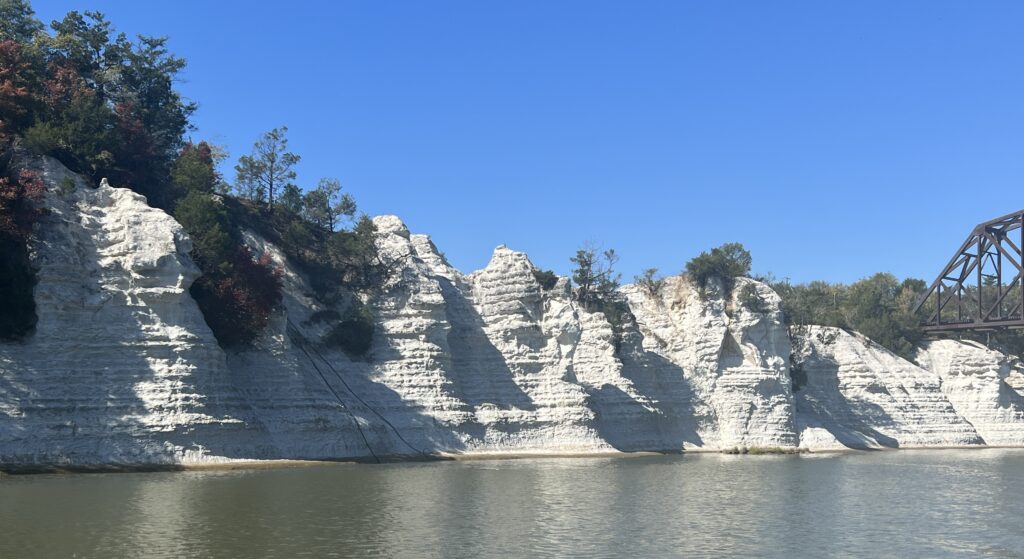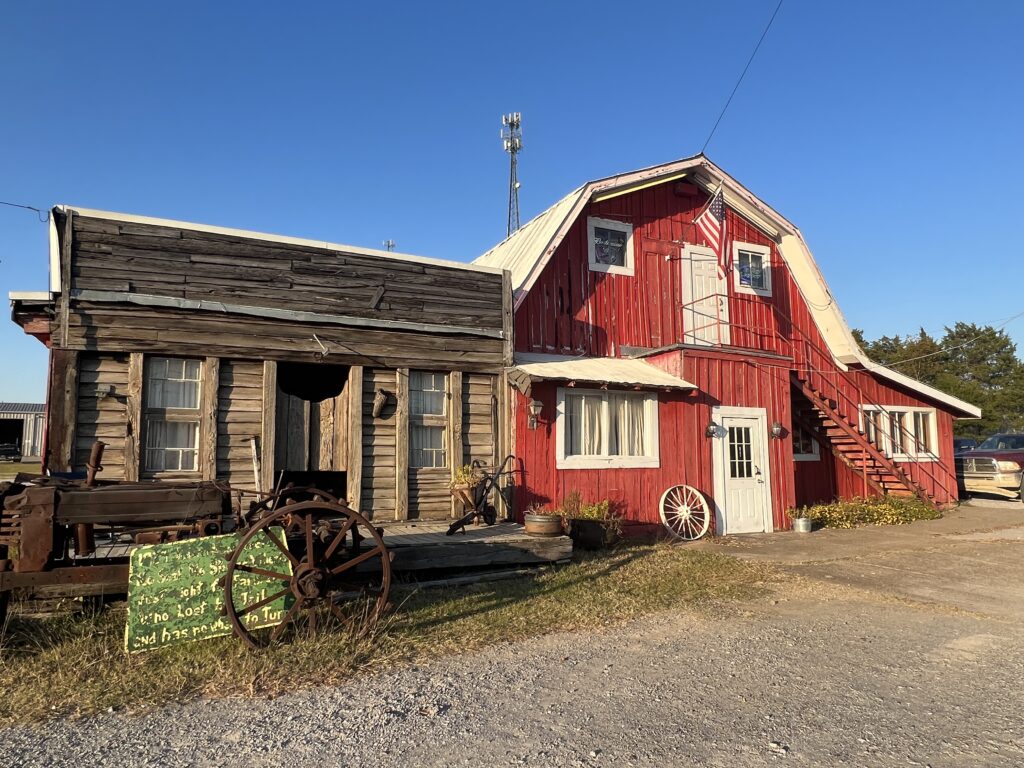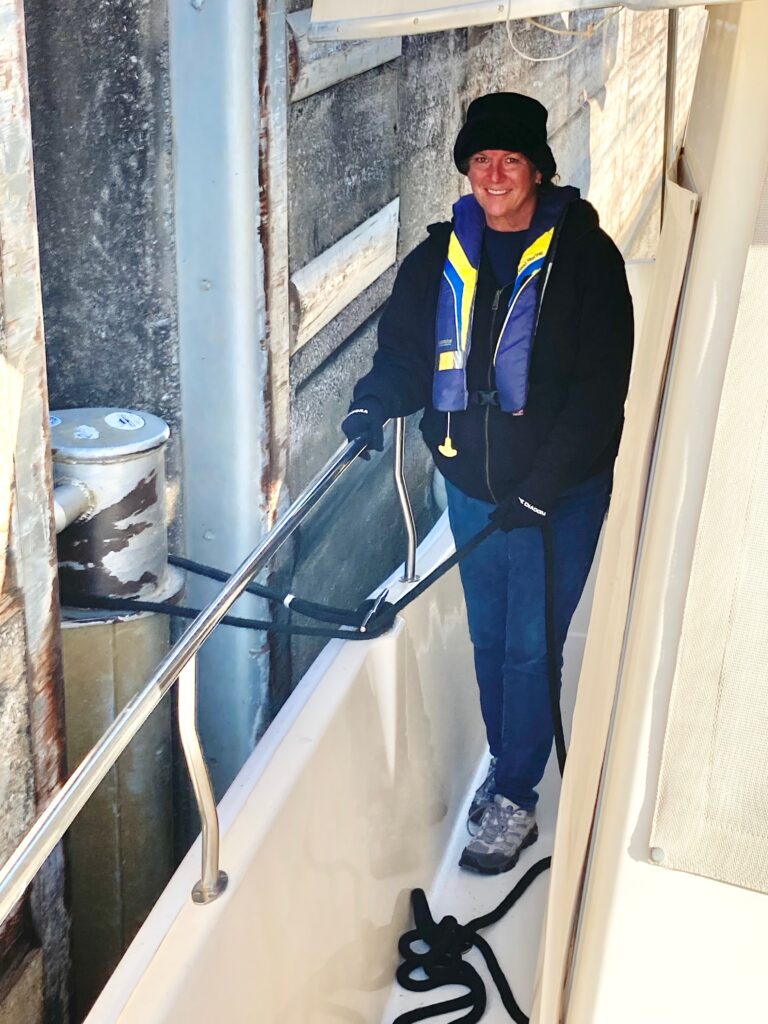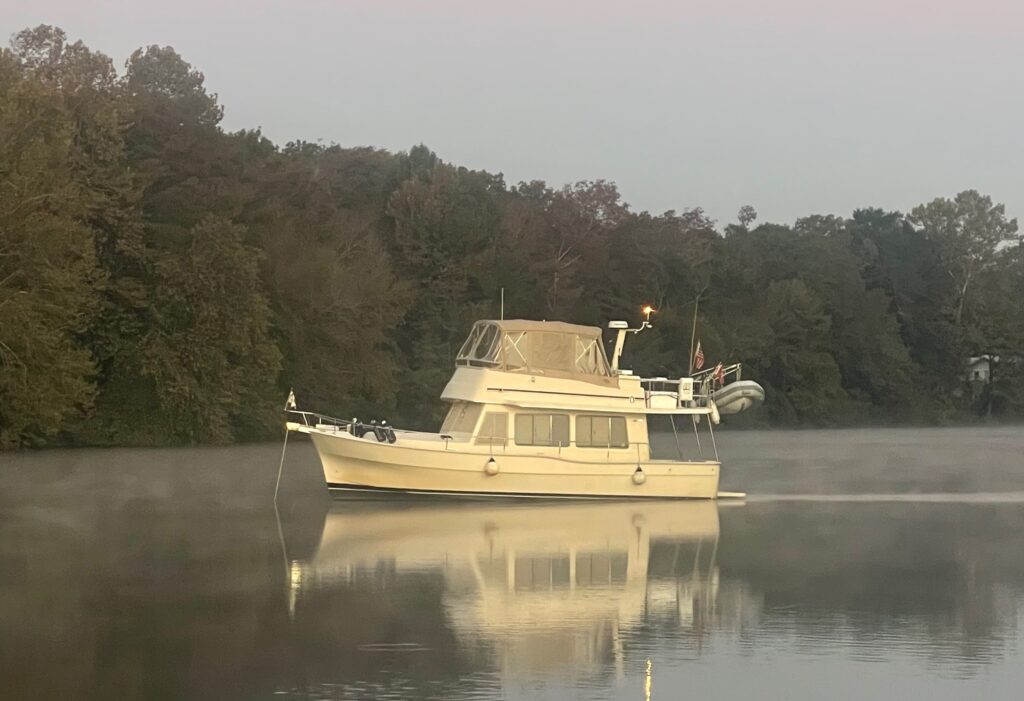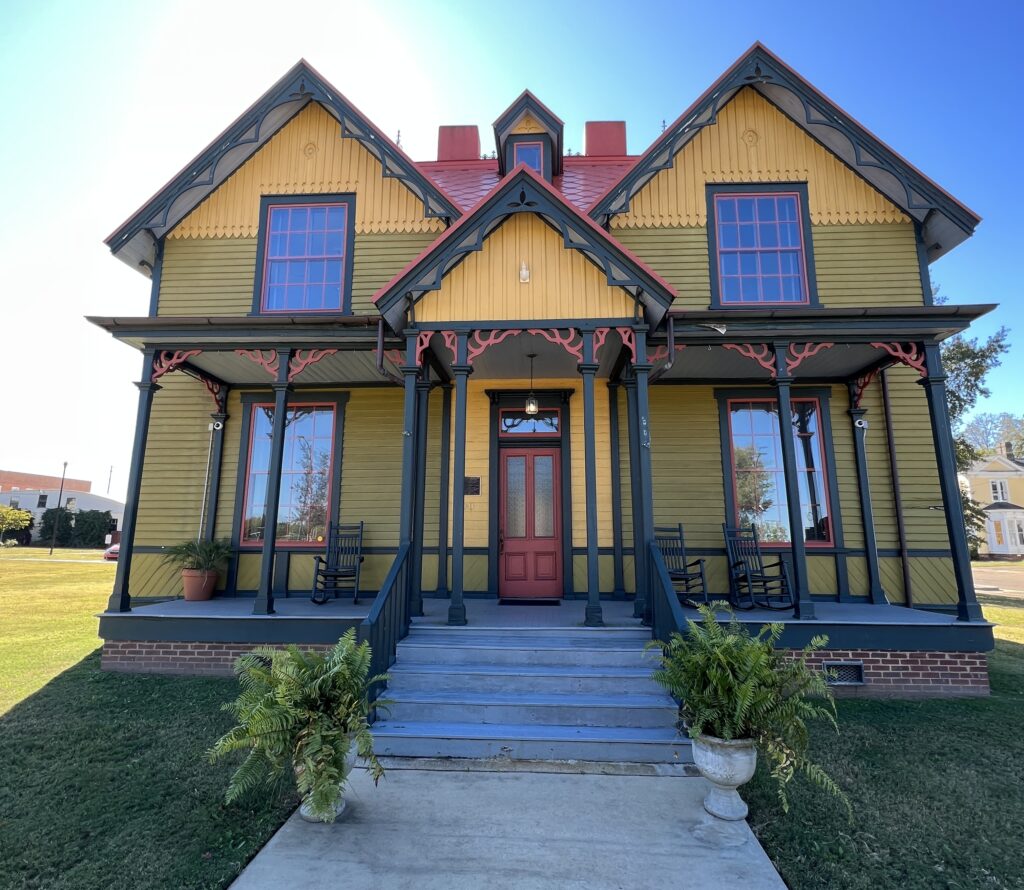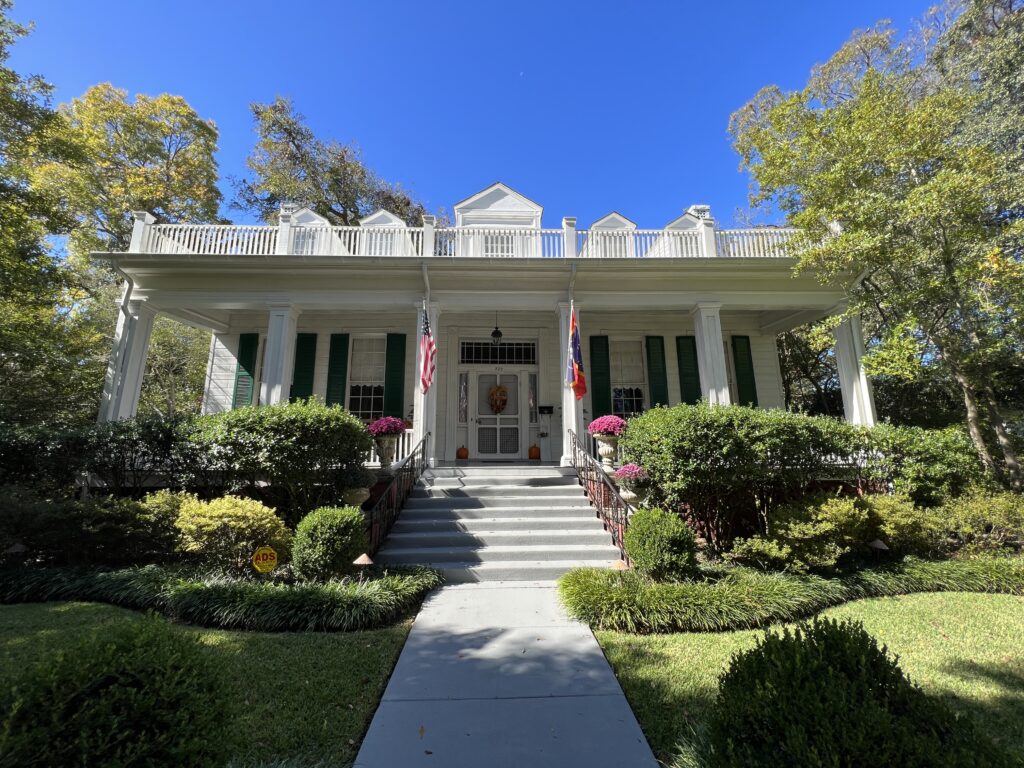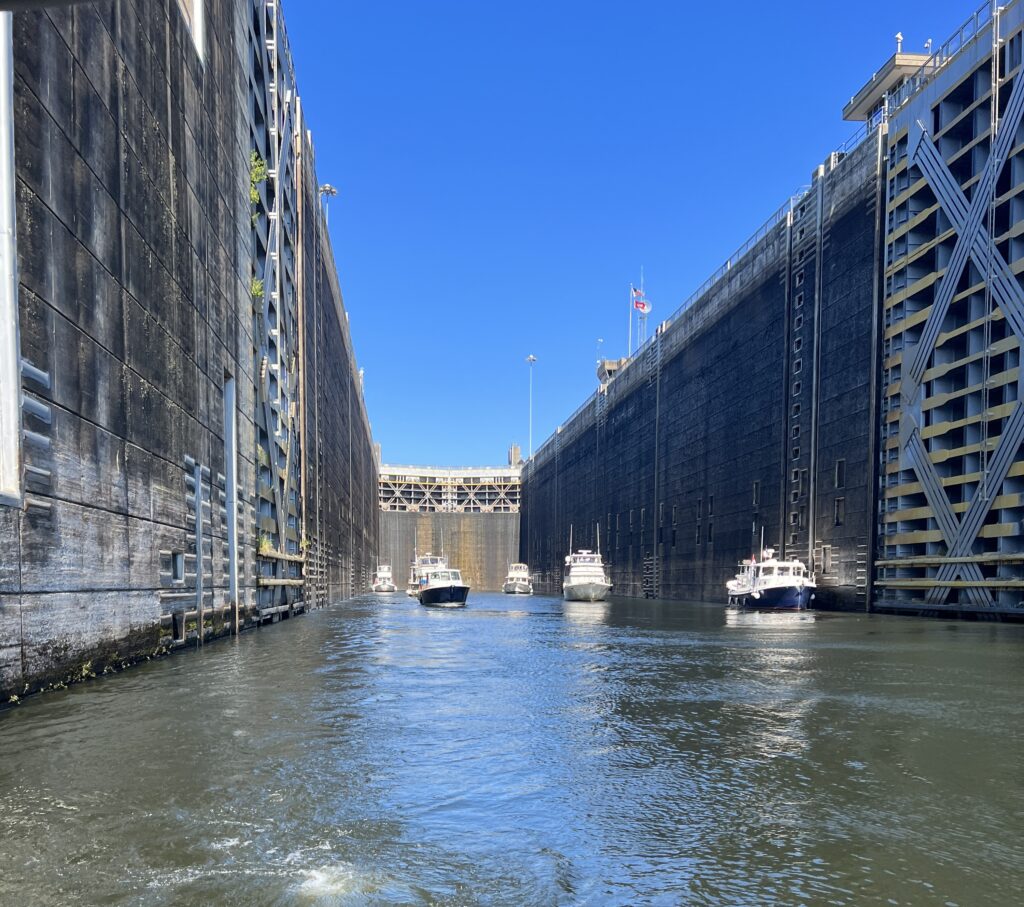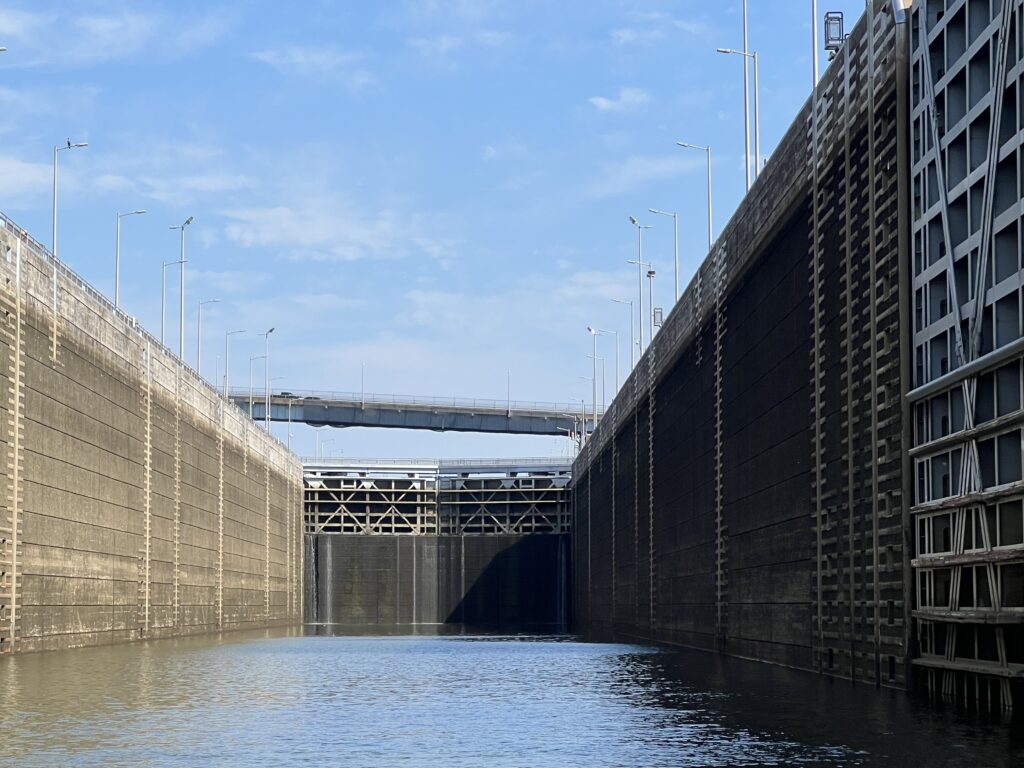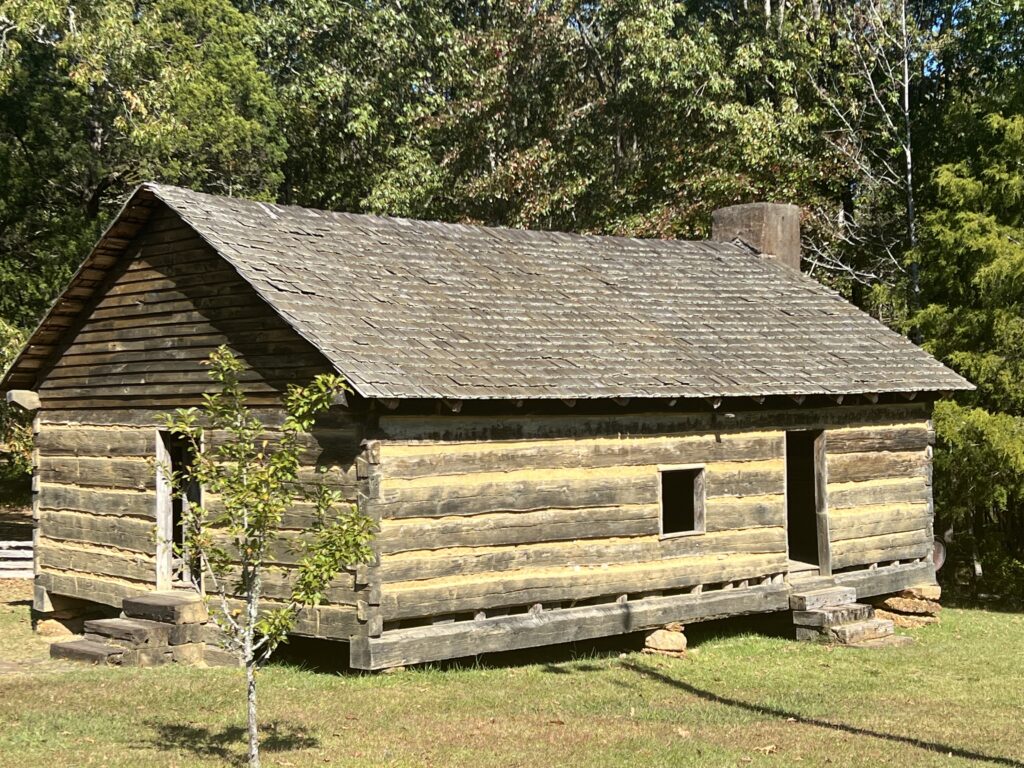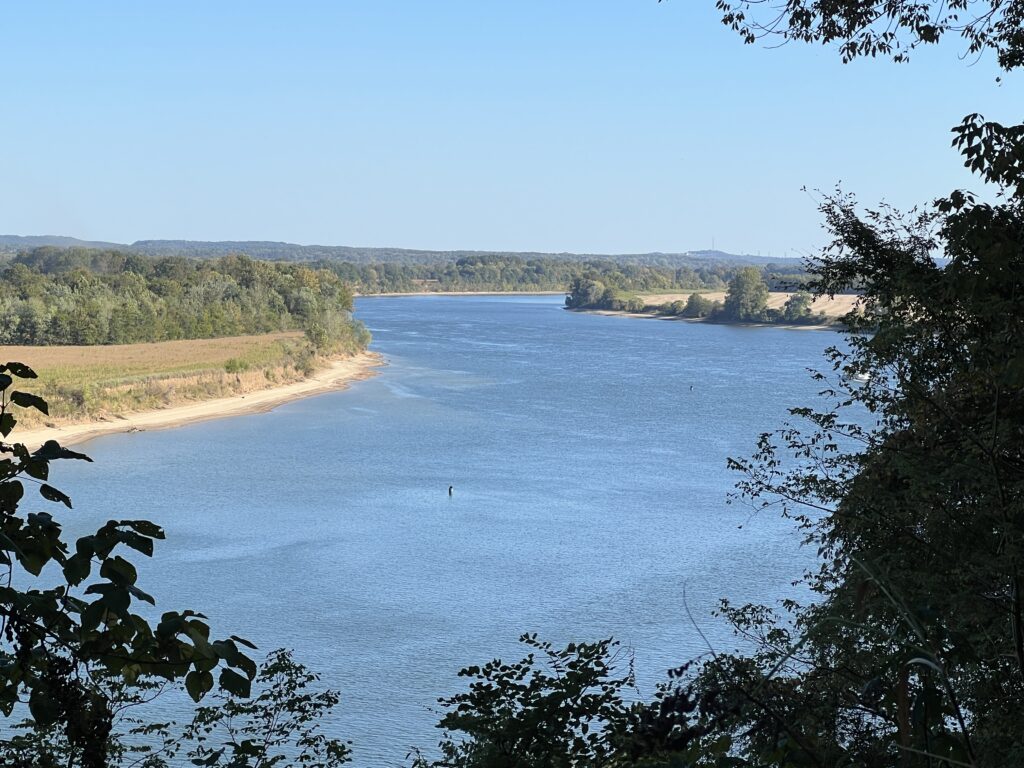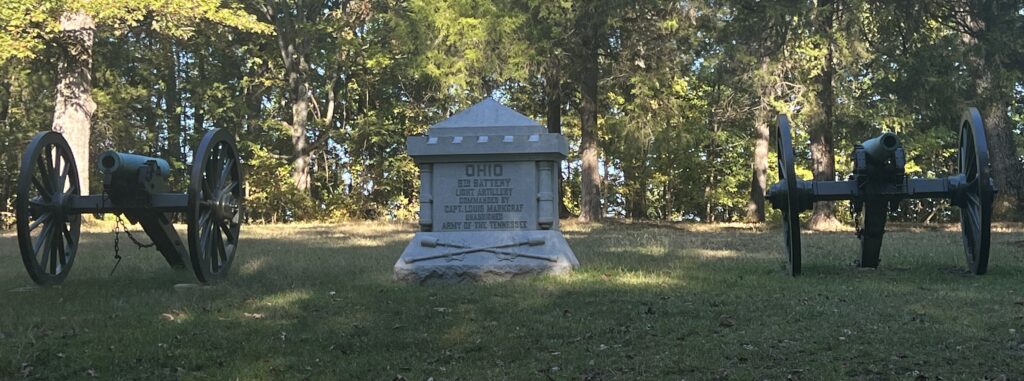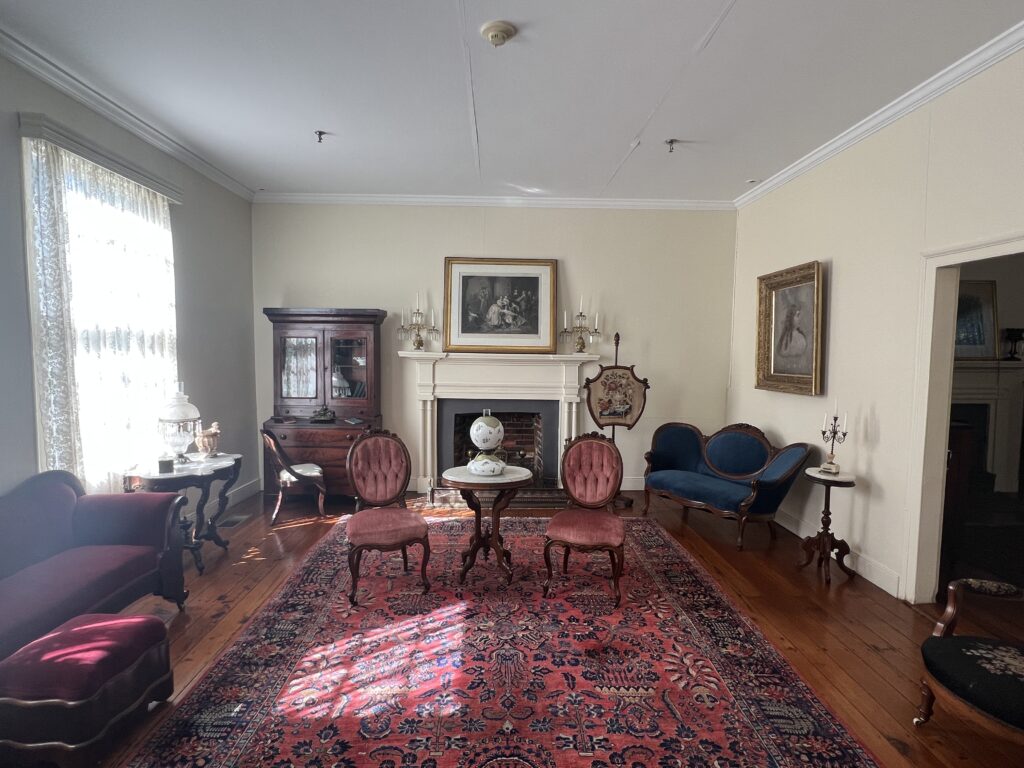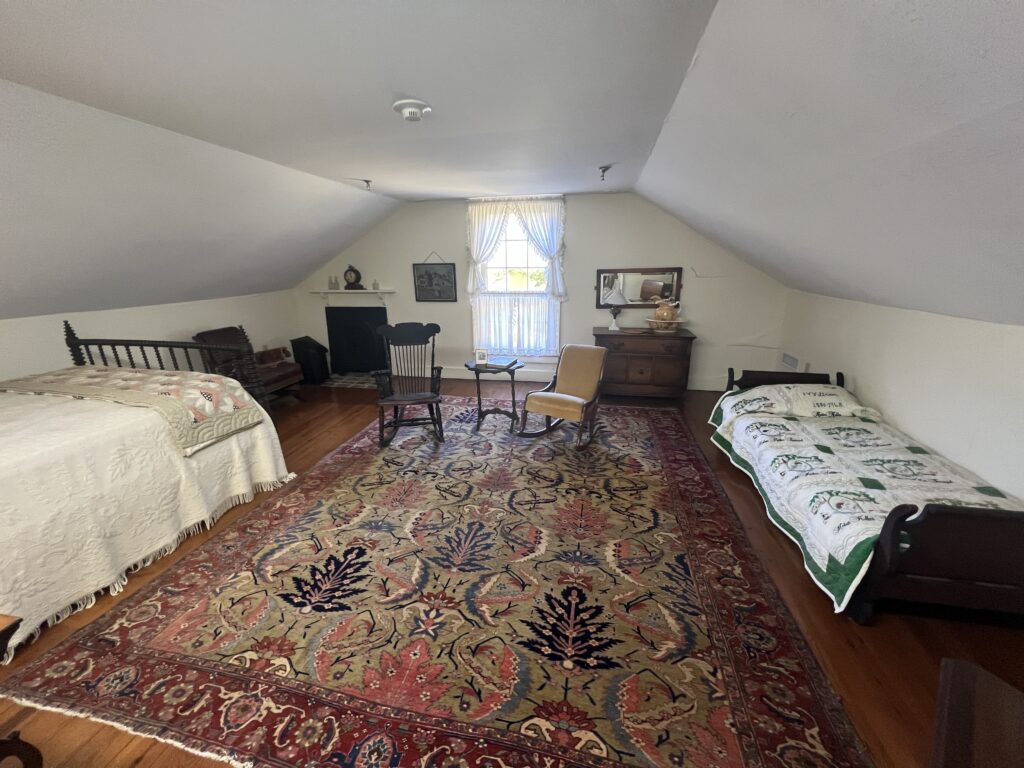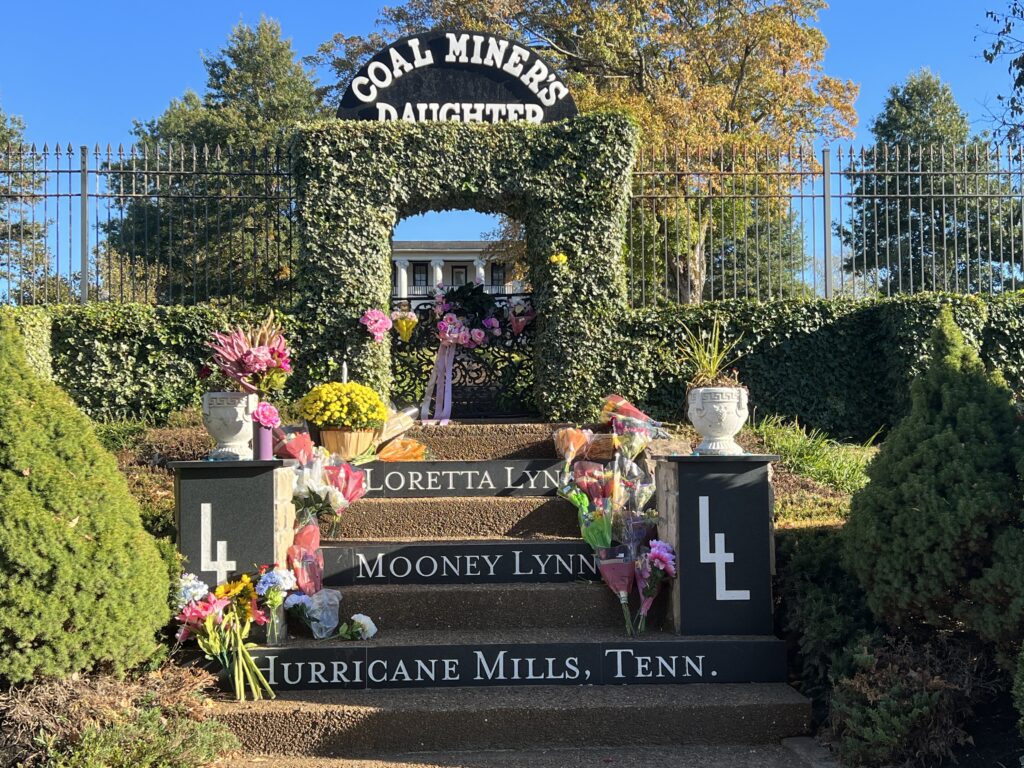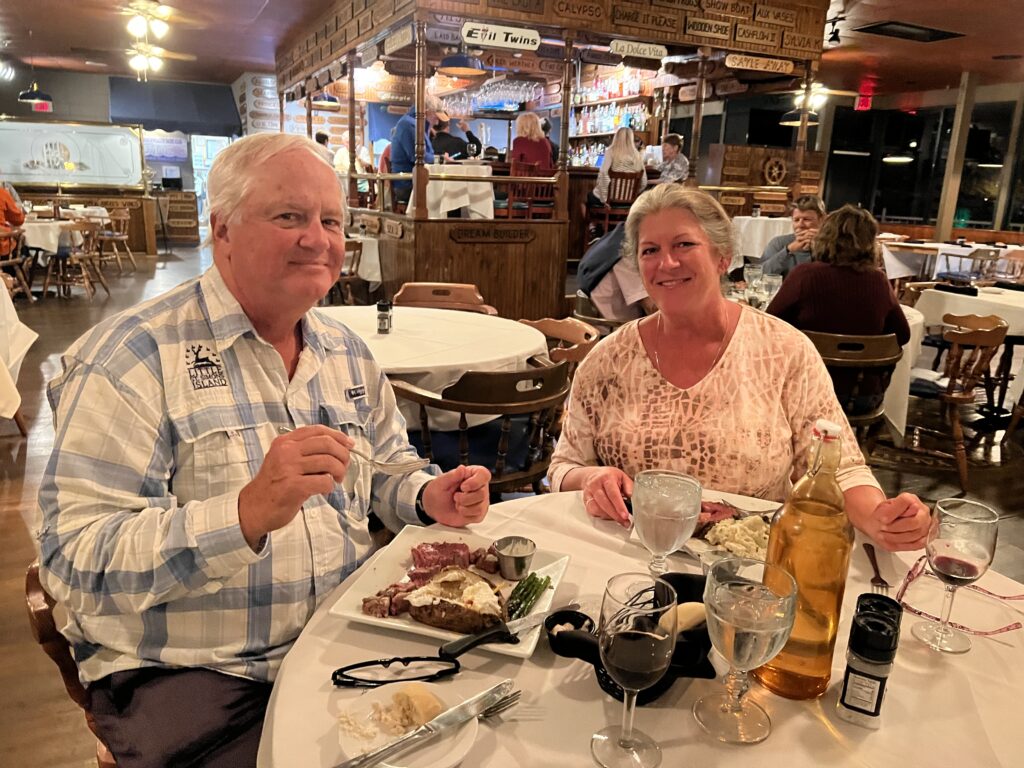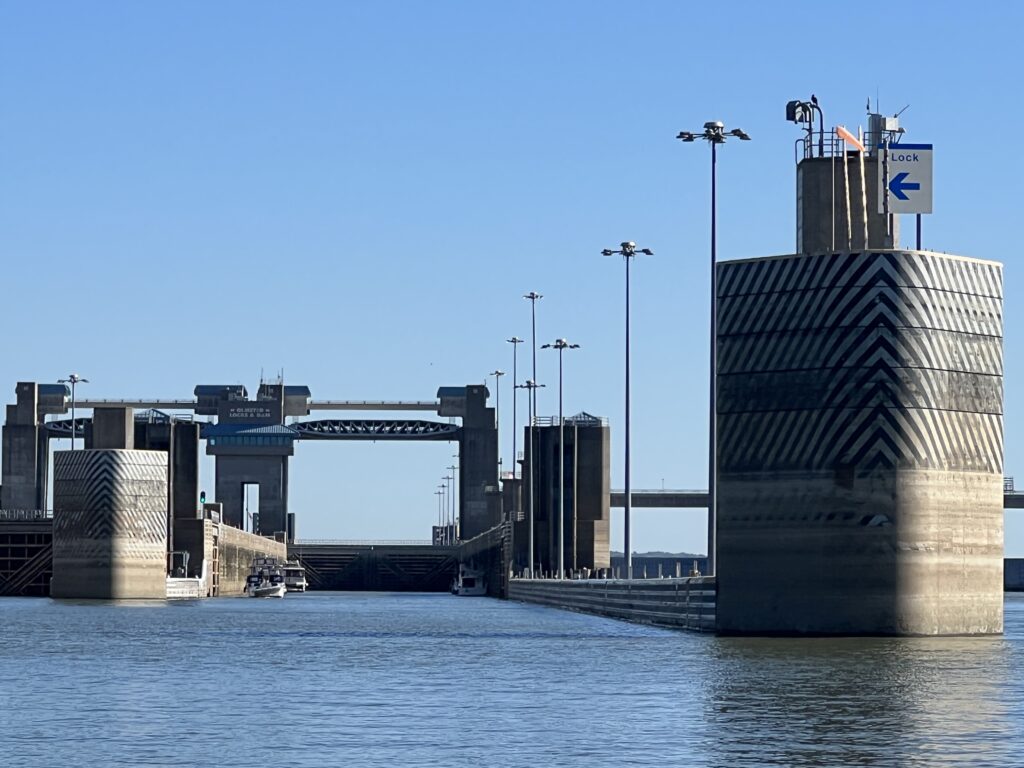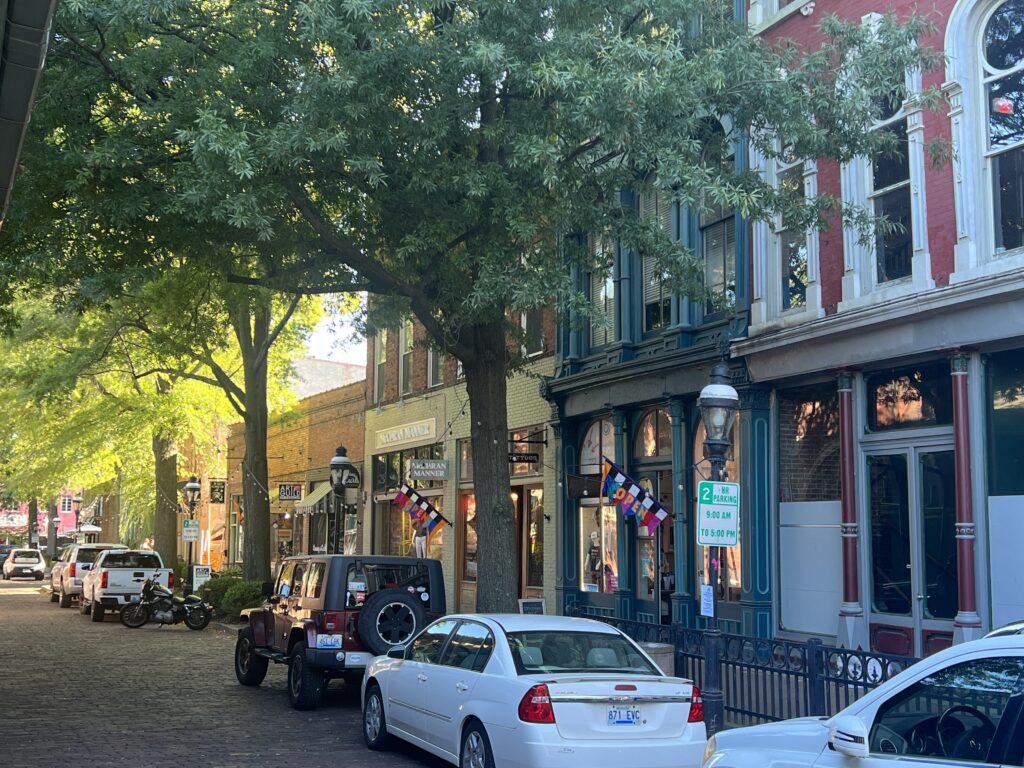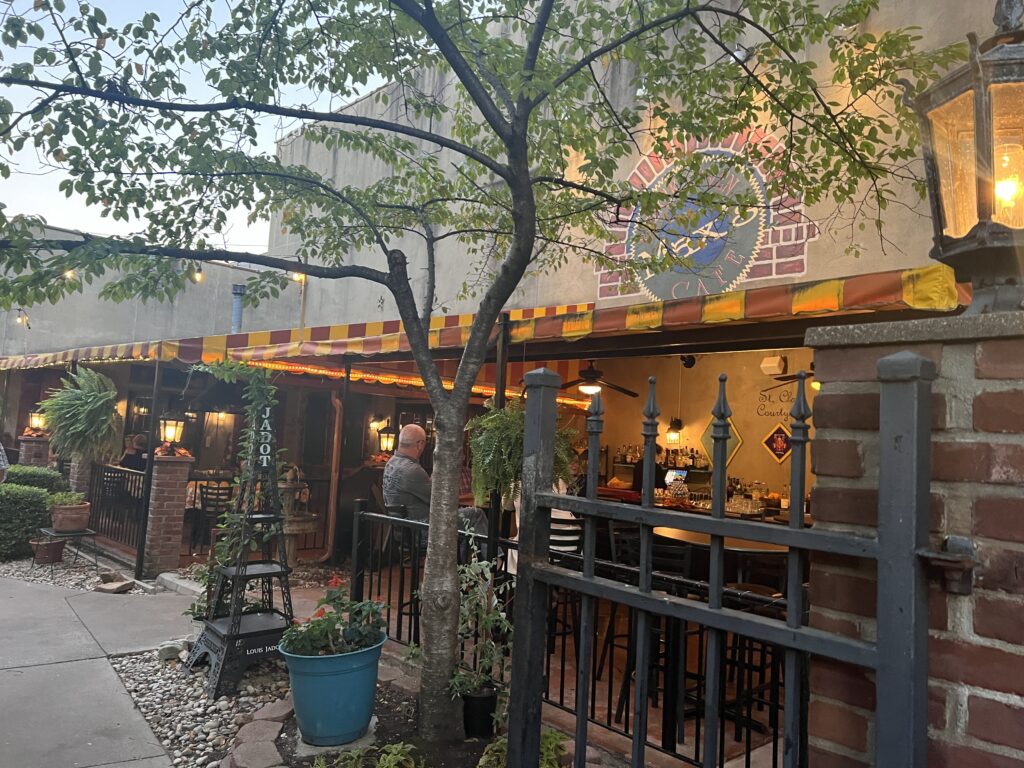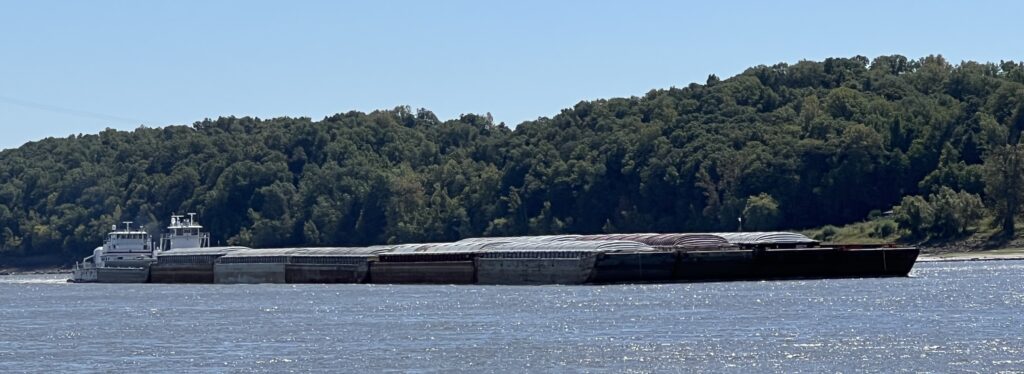- 55.5 miles
- 5 hours 26 minutes
- 10.2 mph average speed
- 5-15 mph winds




We are now off the rivers and back in saltwater and tides. It has been quite a while since we have encountered rough seas but crossing Mobile Bay was a little rough due to the high winds. We had a little rain on our trip which we also have not seen in quite a while!
We had a delicious dinner at Wok by d’Bay in Fairhope:

Included in our “welcome folder” from the marina was a recipe for Swamp Soup which is a popular dish around this area.

The following day, we had a wonderful breakfast at Warehouse Bakery & Donuts:

Next, we spent several hours walking around downtown Fairhope and visiting the Fairhope Museum of History and the Fairhope Storybook Castles.
Fairhope Pharmacy was built in 1916 and has been a pharmacy ever since. It is one of the oldest pharmacies in Alabama.
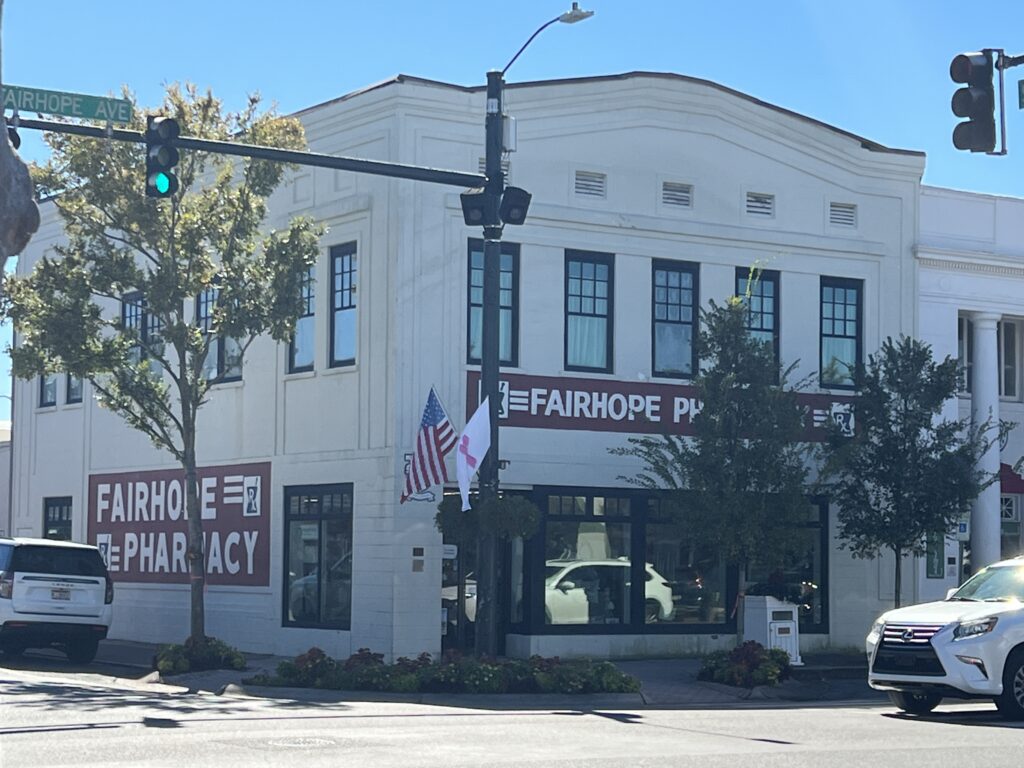


The Farihope Museum of History is a great museum! It is located in a 1928 Spanish mission-style building which served as City Hall and the Fairhope Police Department from 1928 until 2002.



Also inside the museum was the old town jail. The white stucco wall was originally the back wall of the building in 1928. The two jail cells contain the original iron bars and riveted walls which came out of a ship. The jail cells were still in use in 2002 and the graffiti was left by the prisoners.






Dean Mosher is a renowned artist who resides in Farihope in his hand-built home and studio, Mosher Castle (see below). Some of his paintings are included in places such as the Naval Academy in Annapolis, The Smithsonian (“Wilbur Wright Greets Lady Liberty”) and several National Park Visitors Centers among other places as well as in many books.
Fairhope’s “Storybook Castles” consist of Sheldon Castle, Mosher Castle and Boom Castle.
Sheldon Castle was hand-built in 1946 by Dean Mosher’s father-in-law, Craig Sheldon who is memorialized in the bronze statue posted above. Notice the patchwork-quilt design of the roof. Sheldon would bring home materials that were left over from construction jobs where he worked. The tower was built in the 1950’s for his children’s rooms and his office. The house was built of Clay City tile covered with Mobile Bay stone. Sheldon embellished the stone with items such as old tools, Civil War shrapnel, cookware and bottles.

Mosher Castle was hand-built by Dean Mosher, Sheldon’s son-in-law. Construction began in 1983 and is ongoing. Many of the features found in Sheldon’s castle appear in Mosher Castle as well. The stones of Mosher Castle are embedded with glass and pottery as well as objects from around the world, including the Great Wall of China and the Berlin Wall.
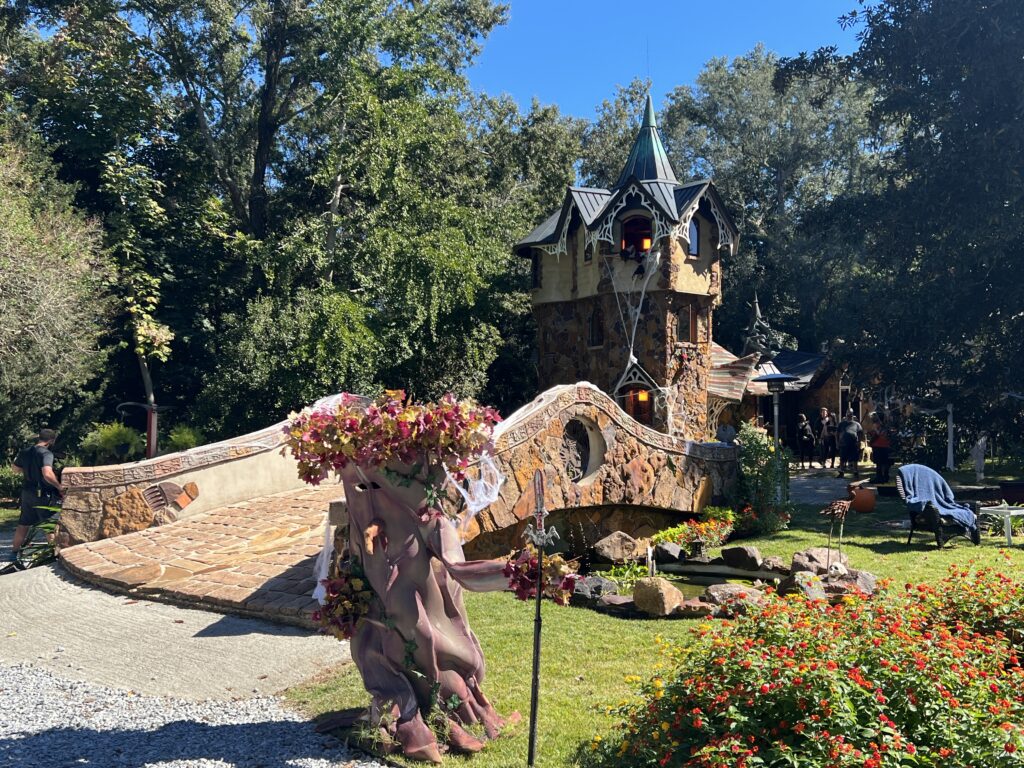


Boom Castle was completed in 2020. Long-time friends of the Sheldon-Mother families, Glenn and Sally Boom, purchased the land adjacent to Mosher Castle. Mosher designed Boom Castle and did much of the exterior trim and stonework.

We had dinner at Sunset Point which was right in front of where we were docked.

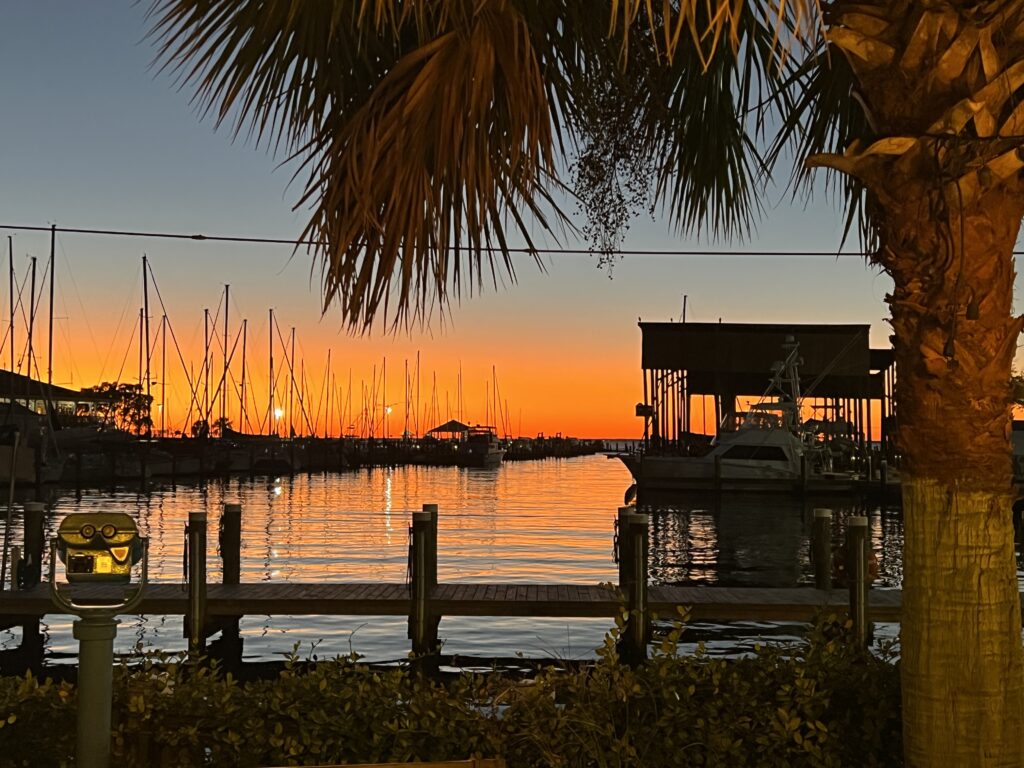

After dinner, we drove over to the Farihope Yacht Club where Summer Place was docked and had a glass of wine with Tracy and Joel. They left the next day and we stayed another day in Fairhope.
We started our final day in Farihope with amazing homemade beignets from Paninin Pete’s located in the French Quarter of downtown Fairhope.

Tolstoy Park, also known as the Henry Stuart House or Hermit House – In 1923, Henry Stuart was diagnosed with tuberculosis and told he had only a few months to live. He moved from Nampa, Idaho to Fairhope after his doctor advised him to move to a better climate to live out his final days. He purchased 10 wooded acres and built Tolstoy Park, a one-room round house which measures only 14 feet wide, is sunk 2 feet into the ground (to maintain a fairly constant temperature) and is made of bricks and hand-made concrete blocks. Stuart used a ladder to access his “bed”, a rope-strung hammock high above floor level. After being told that he had only a few months to live, Stuart ended up living another 22 years! Stuart is the inspiration for the fact-based historical fiction novel, “The Poet of Tolstoy Park”, published in 2005. The author of the novel, Fairhope resident Sonny Brewer, actually wrote much of the novel inside the hut. It is believed Stuart named his hut “Tolstoy Park” because his favorite Russian author, Leo Tolstoy, was a hermit in the years before his death. Stuart was known as the Hermit of Montrose, the name of the area that is now Fairhope, although he really wasn’t a hermit. He welcomed many visitors to his home and became a fixture in the community, teaching and inspiring others. The home is now listed on the National Register of Historic Places and is actually in the parking lot of an office complex which was later built around the hut.






The Grand Hotel, the “Queen of Southern Resorts”, originally opened in 1847 as a two-story building with 40 rooms. In 1864, it served as a hospital for Confederate soldiers during the Civil War and hosted key training operations during World War II. Every day, the Grand Hotel honors its wartime history with a canon firing on the edge of Mobile Bay. The hotel was renovated and added on to several times and was eventually sold to Marriott International in the 1980’s and now has over 400 rooms across five buildings covering 550 acres.


We enjoyed walking the beautiful trail around the grounds of the hotel and along the banks of Mobile Bay. We had planned to have lunch about a mile and a half down the street at Wash House Restaurant and discovered a wonderful walking trail in-between magnificent homes and their docks on Mobile Bay which led us to the restaurant. Once we got to the restaurant, we learned that it was only open for dinner so we walked back to the hotel where our rental car was parked.
We later stopped for lunch at Fish River Grill, a “Funky Junky Redneck Joint”. The restaurant offers patrons a sample of Swamp Soup. We were delighted to taste a sample of this soup since the marina where we are staying had provided us with a recipe for Swamp Soup. We will definitely be making this soup soon – it was delicious!


